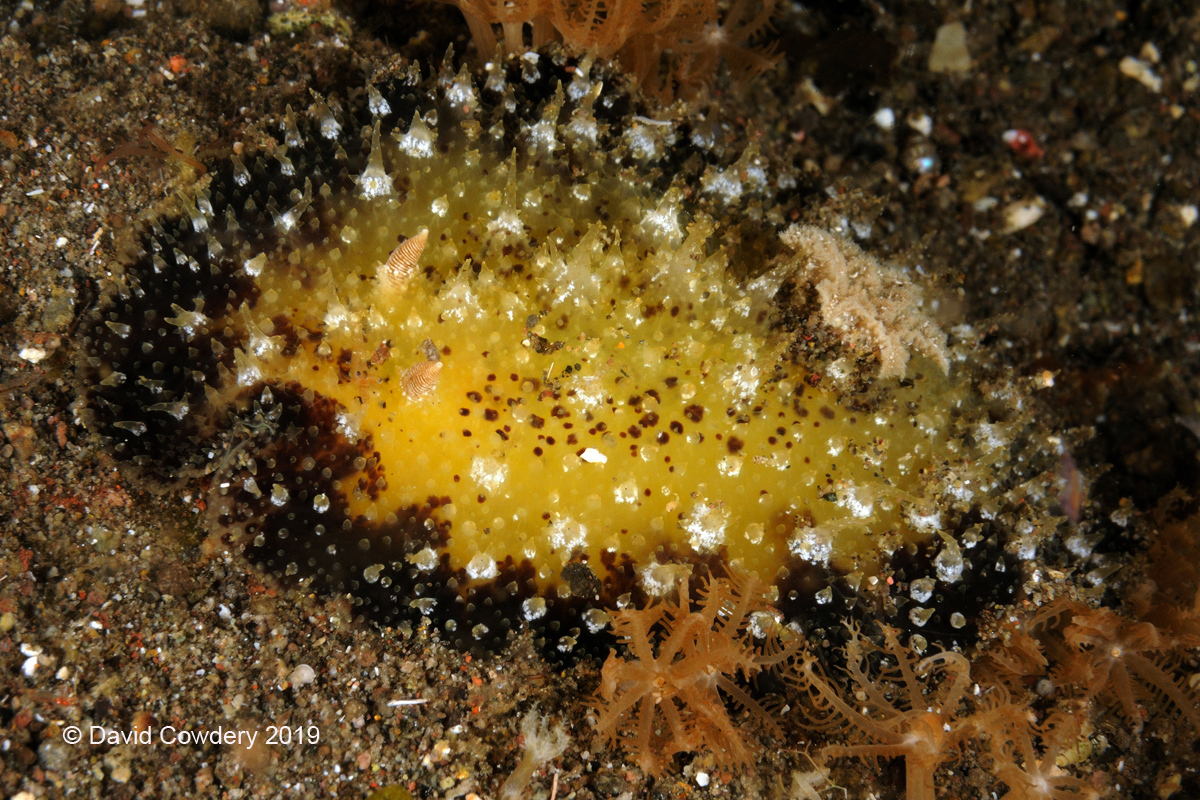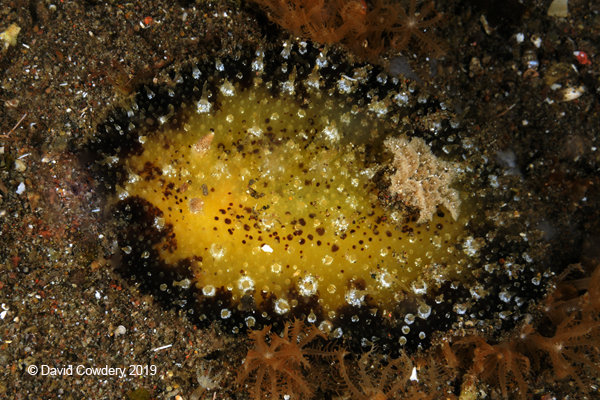 |
Image courtesy of David Cowdery
Horseshoe Bay, Rinca, Indonesia
 |
Thordisa villosa (Alder & Hancock, 1864) Looking at David's photo here we can truly appreciate just how cryptic this dorid species is. One can barely differentiate it from the substrate. The body is yellowish brown with black pigment around the notal margin. The notum is covered with long, transparent, conical papillae. The Sea Slug Forum suggests that the color varies widely from locale to locale. Chan & Gosliner (2007) clarified the genus and added five new species, but more work is needed. NSSI 2nd Ed includes eighteen more undescribed species. A member of the family Discodorididae Bergh, 1891, NSSI reports that this is a rare species found only in a few isolated locations. Good show David. Reference: Chan, J.M. & Gosliner, T.M. 2007. Preliminary Phylogeny of Thordisa Nudibranchia: Discodorididae) with Descriptions of Five New Species. The Veliger, 48(4): 284-308. Dave Behrens Sammamish, WA 98074 July., 2019 Send Dave Behrens email at davidwbehrens@gmail.com |

Dave Cowdery is a retired bio-medical Engineer and is the inventor of the Alumina/Titanium hermetic feedthrough (1970) for implantable bionics and the first to introduce a Titanium casing. This invention created the first bionic implant (pacemaker) with a service life that could be measured in years rather than months and is the basis for todays huge multi billion dollar bionic industry. David is a Divemaster with over 5,500 dives experience and is based near Byron Bay in Australia. David is also a keen competitive road bicycle rider covering over 400 km most weeks. Photographic equipment used Nikon D800 camera with DS160 substrobes.
Send Dave mail at divec@ozemail.com.au
|

Attention all you Sluggers, and you know who you are! The NSSI 2nd edition is now available in ebook PDF and book form . The hard back version will become available Nov. 1st. Both will cost $65 (individually). You will need to jump through a few hoops to get the electronic version as pdf distribution is protected by Adobe ID!! Please read the following to enable reading your electronic purchase! This new 2nd Edition is updated and reorganized, including 185 new species. Among other features, the new edition includes additional photographs of species, an identification key, and an up-to-date classification reflecting the latest evolutionary relationships. The Indo-Pacific represents the largest expanse of tropical ocean in the world, stretching from the Indian Ocean coast of southern Africa and the Red Sea to the central Pacific of the Hawaiian Islands, Easter Island and the Marquesas. This region supports the most diverse marine fauna of any place in the world for most groups of marine organisms. The nudibranchs and sea slugs are no exception to this rule; there are about 3,000 described species of these organisms in the world and at least 40% of these have been found exclusively in the Indo-Pacific tropics. This book illustrates 2,138 Indo-Pacific nudibranchs and sea slugs, including many undescribed species.
|

|
